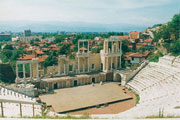 The Plovdiv Branch was established in 1986 as an affiliated unit to the Technical University - Sofia. It became an independent legal entity by Decision No: 30 of 13 June 1990 of the Council of Ministers. The structure of TU-Sofia, Plovdiv Branch includes now two faculties: Faculty of Electronics and Automation and Faculty of Mechanical and Instrument Engineering on the basis of Decrees of the Council of Ministers and Decisions of the Academic Council. The Branch as such is an affiliated structure of Technical University - Sofia, providing training in Bachelor's, Master's and Doctor's degree courses affirmed by the Council of Ministers.
The Plovdiv Branch was established in 1986 as an affiliated unit to the Technical University - Sofia. It became an independent legal entity by Decision No: 30 of 13 June 1990 of the Council of Ministers. The structure of TU-Sofia, Plovdiv Branch includes now two faculties: Faculty of Electronics and Automation and Faculty of Mechanical and Instrument Engineering on the basis of Decrees of the Council of Ministers and Decisions of the Academic Council. The Branch as such is an affiliated structure of Technical University - Sofia, providing training in Bachelor's, Master's and Doctor's degree courses affirmed by the Council of Ministers.
The Branch has contemporary facilities including modern lecture halls and laboratories, an up-to-date library with over 100000 volumes of educational and specialized technical literature, canteens and a student hostel.




